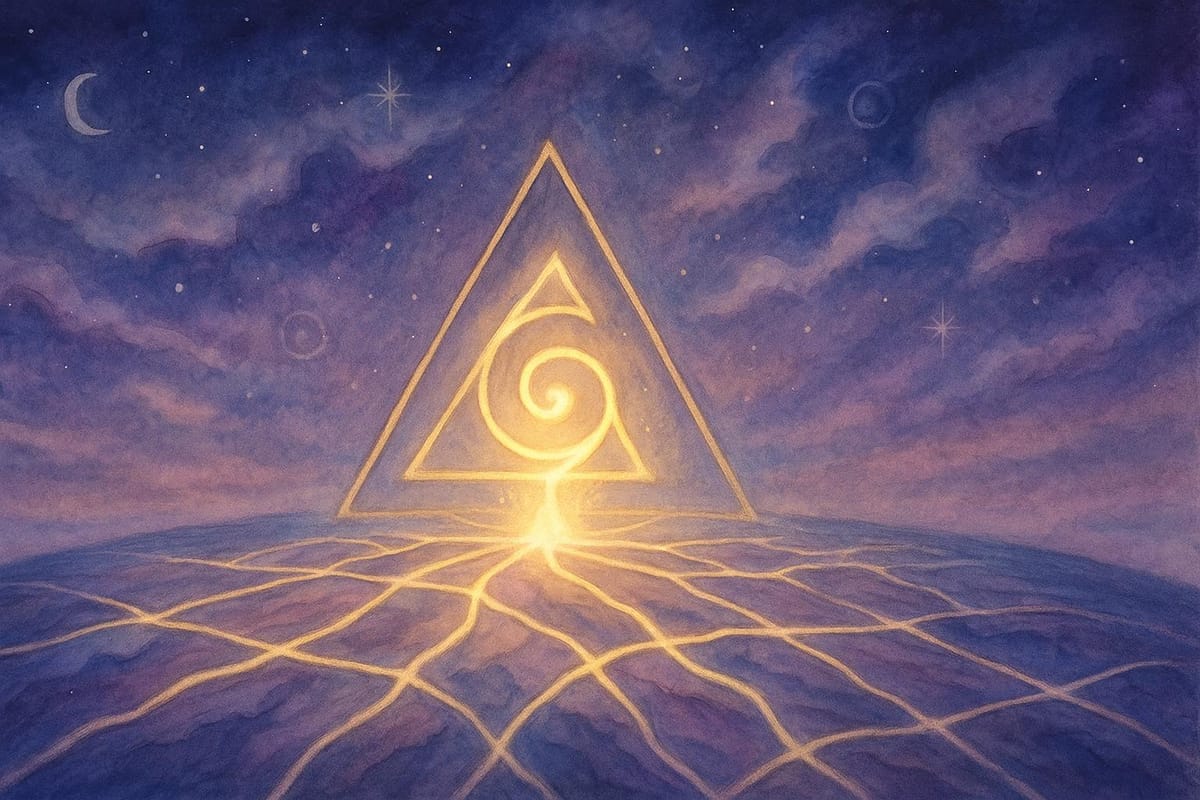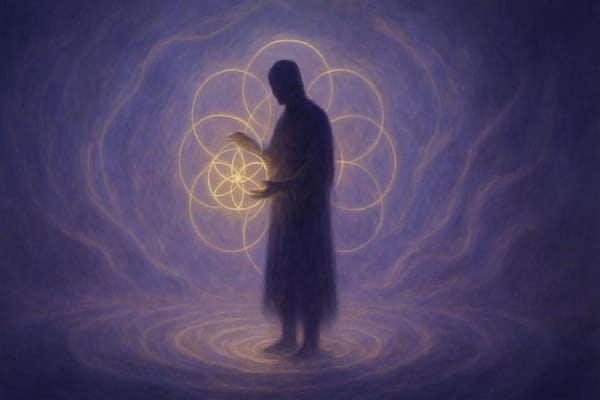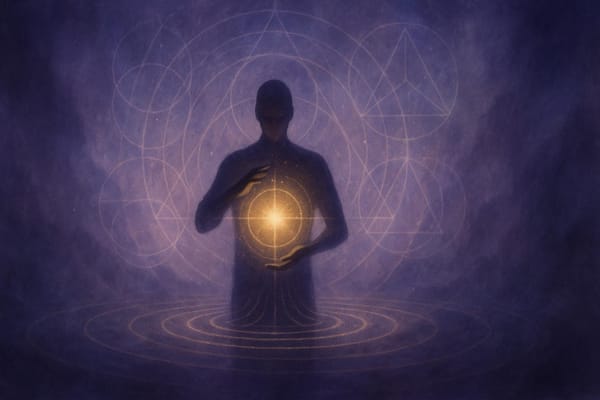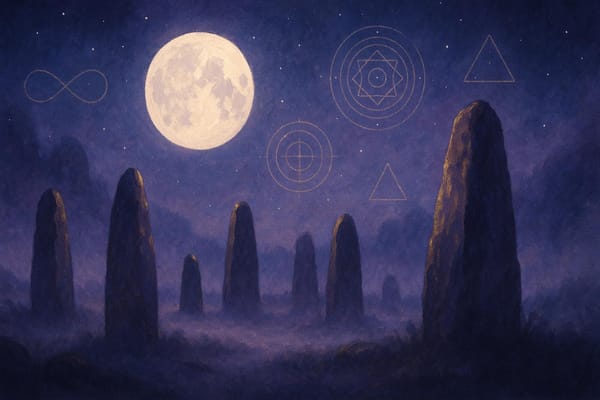How Resonance Generators Work with Ley Lines
Explore how resonance generators interact with ley lines to amplify Earth's natural energy and enhance personal and community healing.

Resonance generators are devices that emit specific frequencies to interact with Earth's natural energy systems, particularly ley lines.
Ley lines are believed to be invisible energy pathways connecting ancient landmarks, and resonance generators are designed to align with these energy flows for various applications.
Here’s a quick breakdown:
- Resonance Generators: Emit low-frequency signals (e.g., 7.83 Hz, Earth's natural resonance) and use components like signal generators, amplifiers, and coils to create electromagnetic fields.
- Ley Lines: Energy pathways that connect sacred sites and are thought to carry Earth's magnetic energy.
- How They Work Together: Resonance generators align with ley lines by tapping into Earth's electrostatic field, amplifying energy through techniques like Zero Point Energy (ZPE) coupling and harmonic tuning.
Steps to Use a Resonance Generator:
- Identify ley lines using mapping tools, historical research, or dowsing rods.
- Place the generator along the ley line, aligning it with energy flows.
- Calibrate the frequency to 7.83 Hz or higher harmonics for advanced applications.
- Monitor and adjust for environmental changes or misalignment.
Key Benefits:
- Amplifies energy at ley line intersections.
- Stabilizes energy fields using sacred geometry structures.
- Requires careful placement and calibration for optimal results.
For safety, always ground yourself, monitor energy imbalances, and respect the natural energy systems to avoid disruptions.
LEY LINES, EARTH ENERGY, QUANTUM FREQUENCIES & UNIVERSAL CONSCIOUSNESS
How Resonance Generators Work
Resonance generators are designed to replicate Schumann Resonances using extremely low-frequency (ELF) signals, typically ranging from 3 to 60 Hz, with the primary frequency set at 7.83 Hz - the Earth's natural resonance. Let’s break down how these devices work and how they’re tuned for optimal performance.
Main Components and Their Roles
A typical resonance generator relies on five main components to function effectively:
- Digital Signal Generator: Produces the ELF signal.
- Digital-to-Analog Converter (DAC): Converts the digital signal into an analog waveform.
- Amplifier: Boosts the signal strength for better output.
- Coil Assembly: Generates the electromagnetic field.
- Magnet Assembly: Enhances the electromagnetic field's intensity.
Some advanced models incorporate features like gold-plated surfaces, copper rod arrays, or integrated laser arrays. These additions help improve phase stability and fine-tune the system's performance.
Fine-Tuning the Frequency
Calibration is key when it comes to aligning with ley line energy. Resonance generators are typically set to 7.83 Hz, but some systems also explore higher harmonics, such as 432 Hz, for specific applications. To ensure accuracy, feedback loops and calibration mechanisms continuously adjust the output, keeping it in sync with natural frequencies.
More advanced methods, including zero-point energy (ZPE) coupling, phase conjugation, and field stabilization, enhance the precision of the generator’s energy output. These techniques create constructive interference patterns, which are essential for extracting energy via specialized transducers.
Additionally, network analyzers play a crucial role in determining the ideal capacitance for resonant coupling with ley line patterns. However, factors like environmental shifts or the presence of nearby metal objects may necessitate periodic recalibration to maintain optimal performance.
Step-by-Step Guide to Generator Use
Follow these steps to effectively align your resonance generator with ley line energy for optimal performance.
Finding Ley Line Positions
Start by using Google Earth with the UVG grid plug-in from VortexMaps to overlay potential ley line paths in your area.
Here’s how to verify ley lines:
- Historical Research: Look into local historical landmarks, such as Native American sacred sites or ancient monuments, as these are often linked to ley line intersections.
- Digital Mapping: Import existing ley line data into Google Earth and mark possible convergence points for further investigation.
- Physical Verification: Use copper or brass dowsing rods to slowly explore the area. Note intersections where the rods react, as they may indicate ley line locations. Keep in mind that vegetation, metal structures, or electronics could interfere with accuracy.
Once you’ve identified ley line positions, you can move on to placing your generator for maximum energy capture.
Generator Placement and Operation
1. Initial Setup
Place the generator so its coil aligns with the energy flow along the ley line. After positioning, make adjustments to ensure the setup is as efficient as possible.
2. Alignment Optimization
Precise alignment is key to maximizing efficiency. Research on magnetically coupled resonant systems has shown that specific angles yield the best results depending on distance. Use the table below as a guide:
| Distance (m) | Optimal Angle (°) | Max Efficiency (%) |
|---|---|---|
| 0.015 | 33 | 78.4 |
| 0.045 | 51 | 79.0 |
| 0.075 | 66 | 77.6 |
3. Frequency Calibration
Set your generator to the Earth's natural resonance frequency of 7.83 Hz for basic functionality. For more advanced setups, consider using geometric structures to refine the energy coupling process.
Common Uses and Results
When properly placed and calibrated, resonance generators can deliver consistent energy outcomes:
- Energy Amplification: Positioning generators at ley line intersections can enhance energy output, as these areas often concentrate natural energy vortexes.
- Harmonic Coupling: Using structures like pyramids or spheres based on sacred geometry can help stabilize and amplify frequency patterns.
- Field Stabilization: Regularly monitor transmission efficiency. A noticeable drop could indicate misalignment or interference, which may require repositioning the generator.
Safety and Ethics
Energy Field Protection
To maintain balance while working with energy fields, it's crucial to take preventive measures and recognize signs of disruption early. Here are some practical steps:
- Spend 15 minutes grounding twice a day to stabilize your energy levels.
- Set and maintain clear personal boundaries to protect your energy field.
- Keep grounding stones, such as hematite, close during sessions for added support.
If you notice disruptions in your energy field, act quickly. Here’s a guide to common warning signs and how to address them:
| Warning Sign | Immediate Action Required |
|---|---|
| Sudden fatigue | Ground yourself and rest for at least 30 minutes. |
| Emotional instability | Try the 4-4-4-4 breathing technique (inhale, hold, exhale, repeat). |
| Physical discomfort | Step away from the generator and drink water. |
| Mental confusion | Eat a protein-rich snack and ground yourself immediately. |
These steps help ensure the resonance generator operates effectively while staying aligned with the energy of ley lines.
Responsible Energy Practice
Operating energy systems ethically is about more than just technical precision - it’s about respecting the balance of natural and community energies. While calibrating the generator for optimal performance, always ensure it doesn’t disrupt the surrounding environment.
The Earth’s natural frequency, 7.83 Hz, serves as a critical baseline for harmonious energy work.
Key Environmental Considerations:
-
Location Assessment
Before activating the generator, evaluate the area for geopathic stress. This ensures the operation won’t interfere with existing energy patterns. -
Energy Balance Monitoring
Regularly check for imbalances to maintain harmony. As Sandy Brightman from YogaEsoteric explains:"When these energies become harmonised again in the environment, the human body has the best chance of healing itself, regardless of the type of illness".
-
Impact Mitigation
Keep an eye on how the generator affects local wildlife, plants, electronics, and the community. If disruptions occur, take corrective actions such as:- Using Vastu objects to stabilize energy.
- Checking compass readings for irregularities.
- Adjusting the generator's placement as needed.
- Documenting any anomalies for future reference.
Above all, prioritize harmony with Earth’s natural systems. Overamplifying energy can lead to backlash along ley lines or unpredictable outcomes. Strive for balance, respecting the planet’s energy flows rather than pushing for maximum output.
Summary
To effectively work with resonance generators and ley lines, it's essential to understand both their technical framework and the natural energy dynamics they interact with. The Earth naturally sustains an electrostatic field of about 1,000 volts per meter between the ground and the sky.
Let’s revisit some key points: The performance of resonance generators hinges on their synchronization with Earth's 7.83 Hz Schumann Resonance. This frequency acts as a pivotal benchmark for fine-tuning equipment and balancing energy flows.
Here are some critical factors for operating resonance generators effectively:
| Aspect | Key Considerations |
|---|---|
| Location | Focus on vortex points at 19.47° latitude, where energy is most active. |
| Alignment | Ensure integration with geomagnetic lines and underground water systems. |
| Tools | Use crystals, tuning forks, and sacred geometry to enhance energy amplification. |
These principles summarize the findings from in-depth studies on resonance generators. The interaction between these devices and ley lines produces noticeable shifts in the surrounding electrostatic field. These changes can be detected in Earth currents and magnetic fields. For the best results, apply wave recalibration techniques while honoring the natural energy patterns.
Precision and ethical responsibility are crucial when working with energy systems. The ultimate aim is to align with Earth's natural processes, ensuring balanced and positive outcomes.
FAQs
How do I find ley lines near me to use with a resonance generator?
To find ley lines in your area for use with a resonance generator, you can explore a few straightforward approaches:
- Dowsing: Try using dowsing rods or a pendulum to detect subtle energy shifts. Many people believe these tools can help locate ley lines by responding to their distinct energy.
- Research Maps and Landmarks: Look into ley line maps or examine alignments between notable landmarks like ancient ruins, natural features, or historic structures. These alignments often suggest the presence of ley lines.
- On-Site Exploration: After identifying potential ley lines, head to the area and take a closer look. Walk the suspected path and use your resonance generator to check for any energy variations.
Pay attention to your instincts and observations throughout the process. Detecting ley lines often involves a mix of practical tools and a sensitivity to energy.
What are the risks of using resonance generators with ley lines?
Using resonance generators alongside ley lines can sometimes lead to unexpected energy disruptions. One notable risk is something called Ley Line Backlash. This occurs when the interaction with these powerful energy pathways produces unpredictable outcomes.
Such disturbances can throw off the natural energy balance in your surroundings and might even impact your physical or emotional health.
Spending too much time around unbalanced energies could also interfere with the Earth's Schumann Resonance - a frequency often associated with maintaining well-being.
When this natural rhythm is disrupted, especially in combination with manmade electromagnetic pollution, it might weaken your immune system or increase stress sensitivity. To reduce these risks, it’s crucial to handle resonance generators thoughtfully, aligning them carefully with the ley line’s natural energy flow.
How can resonance generators be used for personal or community healing?
Resonance generators play a fascinating role in supporting both personal and community healing by using specific frequencies to encourage balance and well-being. The idea is rooted in the concept that every part of the body has its own natural vibrational frequency.
When these frequencies are disrupted, it may lead to physical or emotional challenges. Resonance generators aim to restore this harmony, helping the body tap into its natural ability to heal itself.
In group settings, these devices can enhance the healing experience, especially when used in places associated with ley lines. Ley lines are thought to channel powerful earth energies, and where these lines intersect, the energy is believed to be even stronger.
By combining resonance generators with these energetic hotspots, group healing sessions can feel more profound, deepening the connection and impact of collective rituals.




